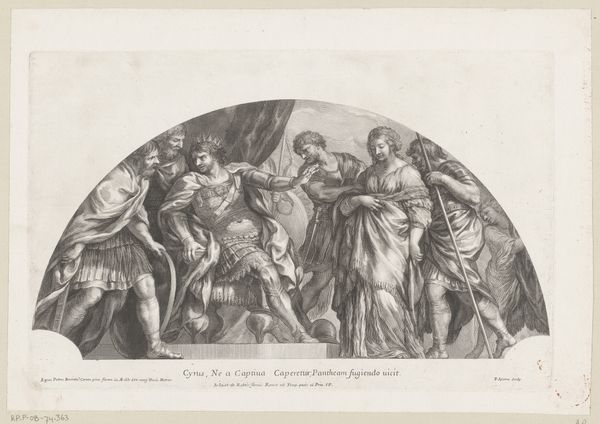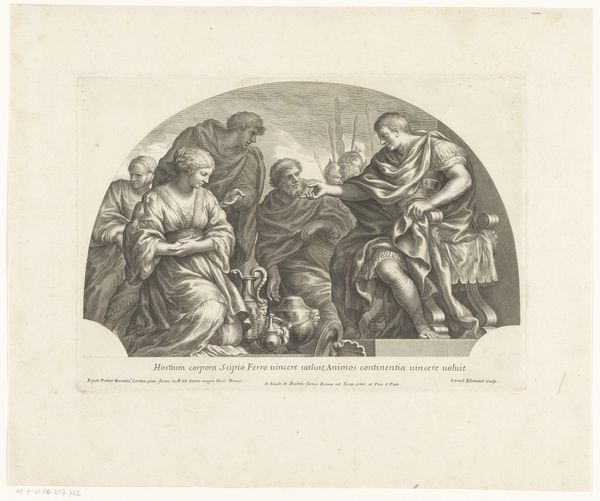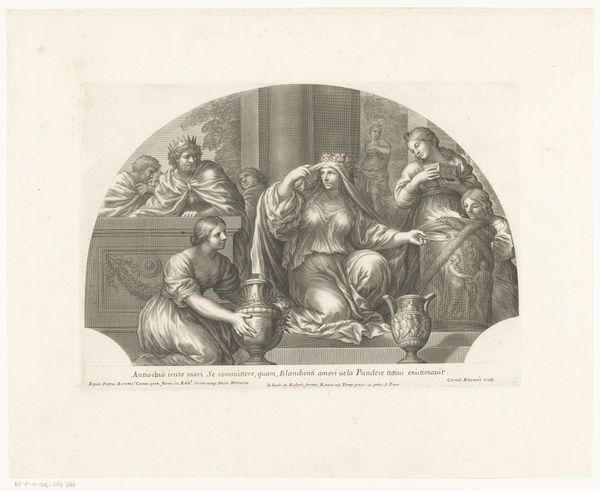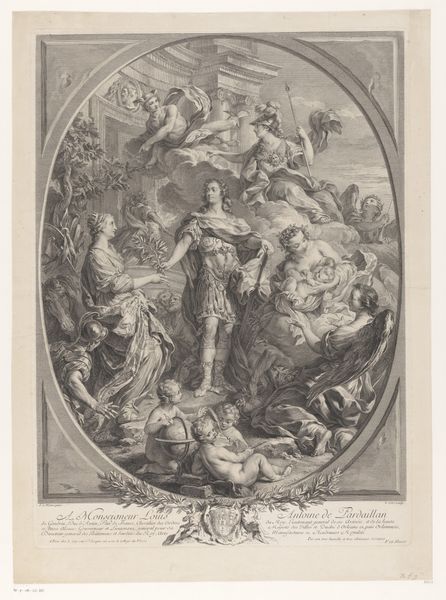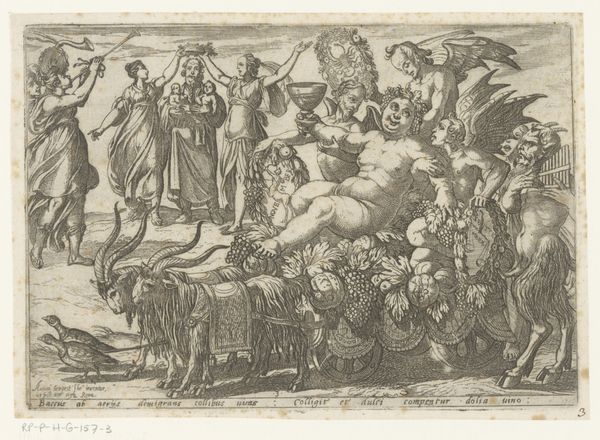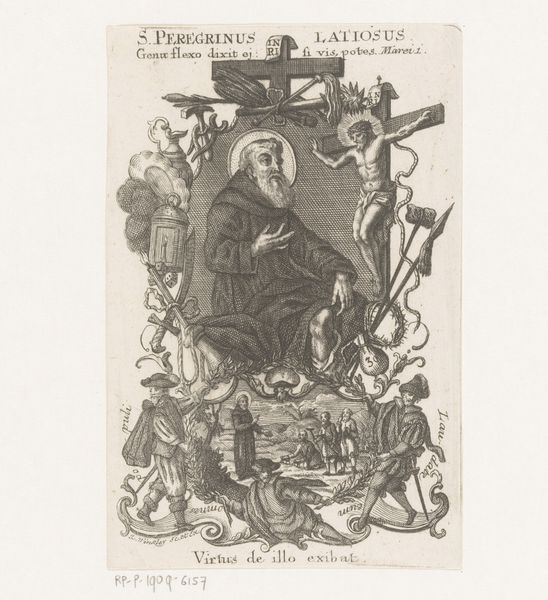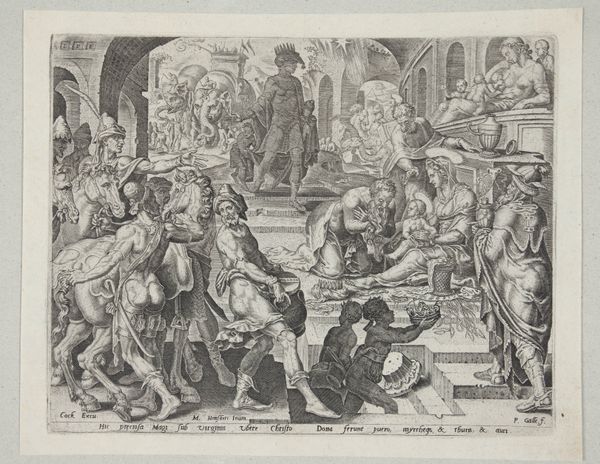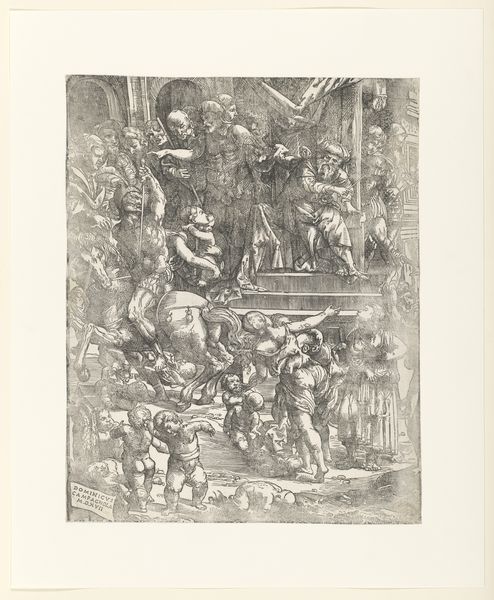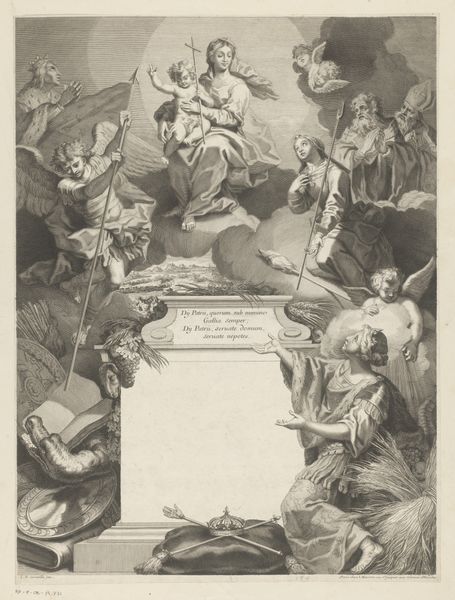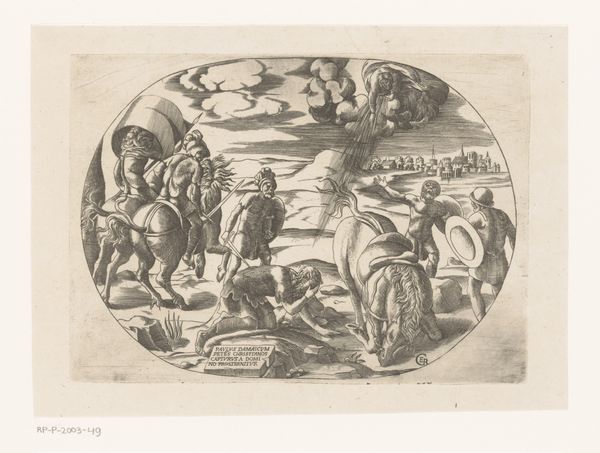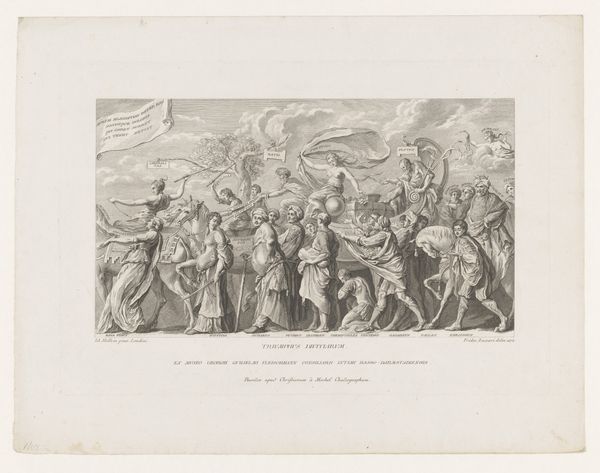
engraving
#
baroque
#
classical-realism
#
figuration
#
history-painting
#
engraving
Dimensions: height 228 mm, width 397 mm, height 332 mm, width 446 mm
Copyright: Rijks Museum: Open Domain
Curator: Immediately striking is the intense vulnerability radiating from the kneeling figure, enveloped in heavy drapery. Editor: Indeed. Let’s delve into this dramatic scene. What we’re looking at is an engraving dating back to approximately 1677, by Conrad Lauwers. The piece is titled "Sisygambis Kneeling Before Alexander the Great." Curator: The composition is remarkable; the stark contrast between Alexander’s powerful stance and Sisygambis's submissive posture speaks volumes about power dynamics and conquered status. I see elements that echo classical-realism infused with Baroque sensibilities. Editor: Symbolically, it's loaded. Kneeling traditionally signifies supplication, and here, it visually represents Persia's surrender to Alexander. The drape acts as a concealing shroud of status as well as defeat. It also appears to function almost like a Madonna's veil. What do you make of that connection? Curator: Fascinating idea. The positioning could hint at a plea for clemency, but within the framework of 17th-century European societal values. There is a fascinating juxtaposition between the victor who holds absolute power and the subjugated Queen, both are presented according to accepted behavioral norms. Sisygambis, therefore, is not diminished but rendered pious through engraving's traditional methods. It almost transcends the specific historical context of Alexander. Editor: I see what you mean. Lauwers is making broader statements about governance and authority, both divine and earthly. How significant would that context have been to viewers then? Curator: Enormously so. Imagery reinforcing divinely sanctioned power was critical amidst social upheavals. Pieces like this subtly propagated prevailing views on hierarchical systems. Art becomes less about the actual historical Alexander and more about his resonance within early modern socio-political rhetoric. Editor: It is quite a loaded representation! Reflecting on our discussion, one appreciates the way art can be made to function at different periods, in that the artist used symbolism in his figures as well as within their relationship. Curator: Agreed. This image underscores how artistic portrayals were instruments in reinforcing the existing structures of the world, revealing a story of shifting social consciousness and values, rather than just historical record.
Comments
No comments
Be the first to comment and join the conversation on the ultimate creative platform.
